Feeling overwhelmed by buzzwords like “big data,” “AI,” and “machine learning”? Don’t worry, you’re not alone! Data science might seem intimidating due to its complex tools and techniques. It requires backgrounds in programming, statistics, math, probability, and more. However, fear not! Learning data science can be fun, exciting, and insightful. It’s filled with discoveries and even some epic fails. So, grab your calculator, get your caffeine fix, and let’s dive into the world of data science together!
Before we dive into the tools and techniques of data science, let’s take a brief look at what data science is all about.

Data Science combines various techniques, tools, and algorithms to extract insights from data. It merges statistics, mathematics, computer science, and domain expertise to analyze complex data sets. The goal is to derive actionable insights that inform decision-making across industries such as healthcare, finance, and transportation. The field’s importance has surged alongside the data explosion, creating ample career opportunities for skilled individuals.
Now, let’s closely examine the fundamental tools and techniques in data science. We’ll delve into their importance and why they ensure success. We’ll cover programming, visualization, and model deployment, providing essential knowledge for skilled data scientists.
Programming languages play a vital role in data science. They enable data scientists to handle large datasets and perform advanced statistical analysis. Data science demands manipulating and analyzing substantial data, and programming languages equip data scientists with effective tools.
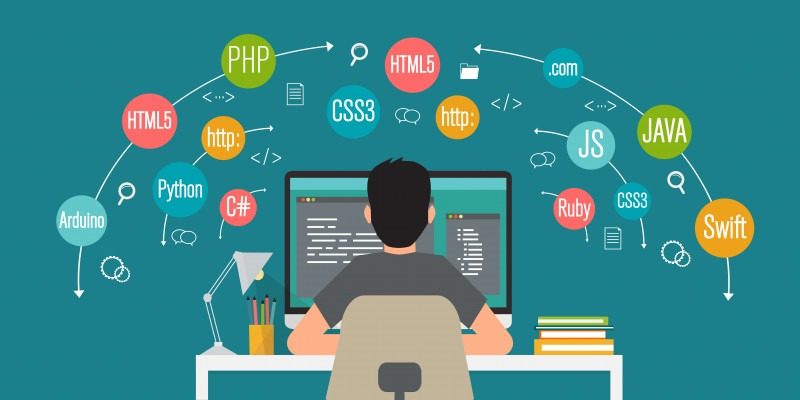
Python, R, and SQL play pivotal roles in data manipulation, statistical analysis, and modeling. These languages empower data scientists to manage large datasets, automate processes, and perform advanced statistical analysis, such as predictive modeling, machine learning, and natural language processing.
Programming languages streamline workflows, automate tasks, and reduce manual effort in data science, allowing data scientists to concentrate on crucial tasks.
There are several programming languages used in data science, and some of the most popular ones are:
Each of these programming languages offers unique features and capabilities that make them useful in data science. However, Python and R are currently the most widely used languages in data science due to their vast libraries, ease of use, and popularity in the data science community.
A library refers to a collection of pre-written code that can be used by developers to simplify their work and perform complex tasks more easily. These libraries are typically created by other developers and are made available for others to use under an open-source license.
Here are some of the main libraries used in data science for both Python and R:
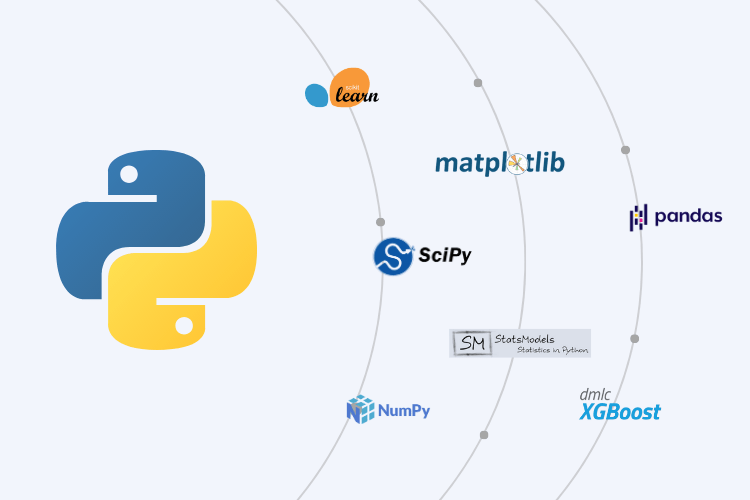
These are just a few of the many libraries available in R and Python for data science. Depending on the specific needs of a project, there are many more libraries that can be used to perform a wide range of data analysis and modelling tasks.
Mathematics serves as a toolbox for data scientists to uncover complex data insights. Each concept, like a tool, has a specific purpose. Linear algebra manipulates high-dimensional data, while calculus optimizes models. Probability and statistics aid in predictions and conclusions. Mastering these concepts empowers data scientists to unravel data mysteries and make impactful decisions.
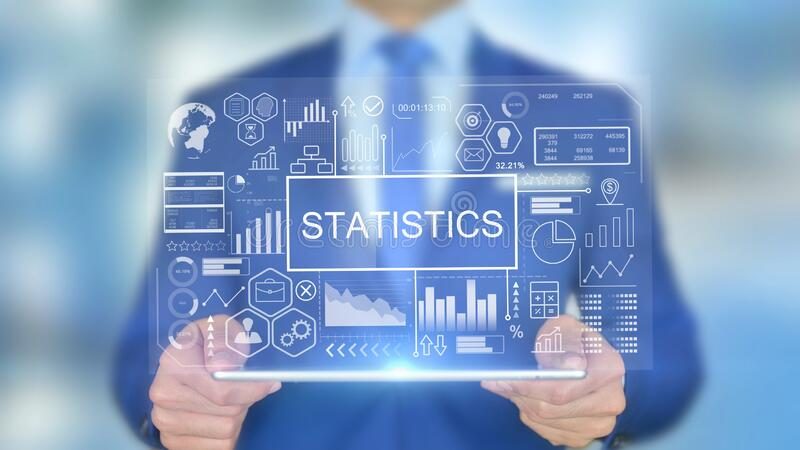
Statistics involves collecting, analyzing, and interpreting data. It summarizes data, infers from samples, and tests hypotheses using models.
In simpler terms, statistics makes sense of numerical data. It identifies patterns, trends, and relationships. It draws conclusions about data, like analyzing survey results or evaluating business performance.
Statistics and data science closely connect. Statistics offers theory and methods for data science. Data science uses statistical techniques for insights. Statistics enables understanding data through techniques like hypothesis testing and regression analysis. It aids decisions based on statistical models.
There are several key statistical concepts that are central to data science. These include:
By understanding these key statistical concepts and techniques, data scientists can analyse and interpret data, build accurate models, make informed decisions, and communicate results effectively.

Probability is the branch of mathematics that deals with the likelihood of events occurring. In simpler terms, probability is the measure of how likely it is that an event will happen.
Probability theory and data science are intricately linked, with probability theory forming the bedrock for numerous statistical methods and models in data science.
In data science, probability theory serves to model and dissect uncertainty and randomness within data. It enables the assessment of probability distributions for datasets, gauging the likelihood of specific values occurring. This aids in forecasting future outcomes and approximating event probabilities.
Likewise, probability theory plays a pivotal role in statistical inference—the art of drawing conclusions about populations from data samples. Here, it assists in calculating the likelihood of observing certain data under a given hypothesis. These insights drive conclusions about the broader population.
Furthermore, probability theory is a cornerstone of machine learning—a data science subset employing algorithms to discern patterns and correlations in data. Many machine learning algorithms rely on probabilistic models to heighten their effectiveness and versatility.
As the name suggests, Data Science is all about data. It involves the storage, organization, and manipulation of large amounts of data to extract valuable insights from them. This is where database management systems (DBMS) come into play. DBMS provide a platform for storing and managing large datasets in a structured manner. Making it easier for data scientists to access and analyse the data efficiently.
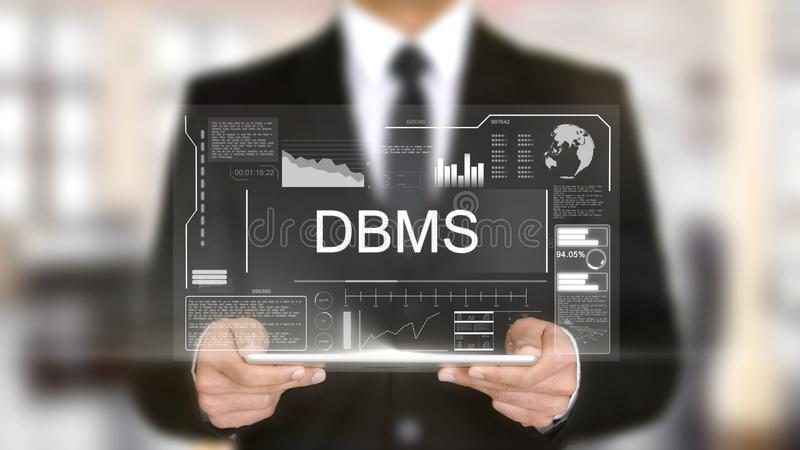
In data science, DBMS are used to store and manage various types of data such as structured, unstructured, and semi-structured data. They also provide tools for querying, searching, and updating data in real-time, which is crucial for data analysis. DBMS also offer features such as data backup, recovery, and security, ensuring data integrity and protection.
SQL, or Structured Query Language, is an essential component of modern database management systems and is particularly important in the context of data science. At its core, SQL provides a standardized way of accessing and manipulating data stored in
databases. This is critical for data scientists who need to extract, transform, and analyse data in order to gain insights and make data-driven decisions.
SQL’s importance in data science cannot be overstated. It allows data scientists to write powerful queries that can filter, sort, group, and aggregate large datasets in a matter of seconds. This helps to streamline the data exploration and analysis process, allowing data scientists to focus on gaining insights rather than wrangling with the data itself.
Moreover, SQL is highly versatile and can be used with a variety of database management systems, including both traditional RDBMS and modern NoSQL databases. This makes it a highly adaptable tool that can be used in a wide range of data science applications.
In short, SQL is a foundational tool that every aspiring data scientist should master. By doing so, they will be able to quickly and easily access and manipulate data, which is essential for unlocking valuable insights and driving data-driven decision-making.
Data visualization is a critical component of data science that allows us to communicate complex data insights in a way that is easy to understand and interpret. With the increasing amount of data generated by businesses and organizations, data visualization has become an essential tool for data scientists to uncover patterns, trends, and insights from large and complex datasets.
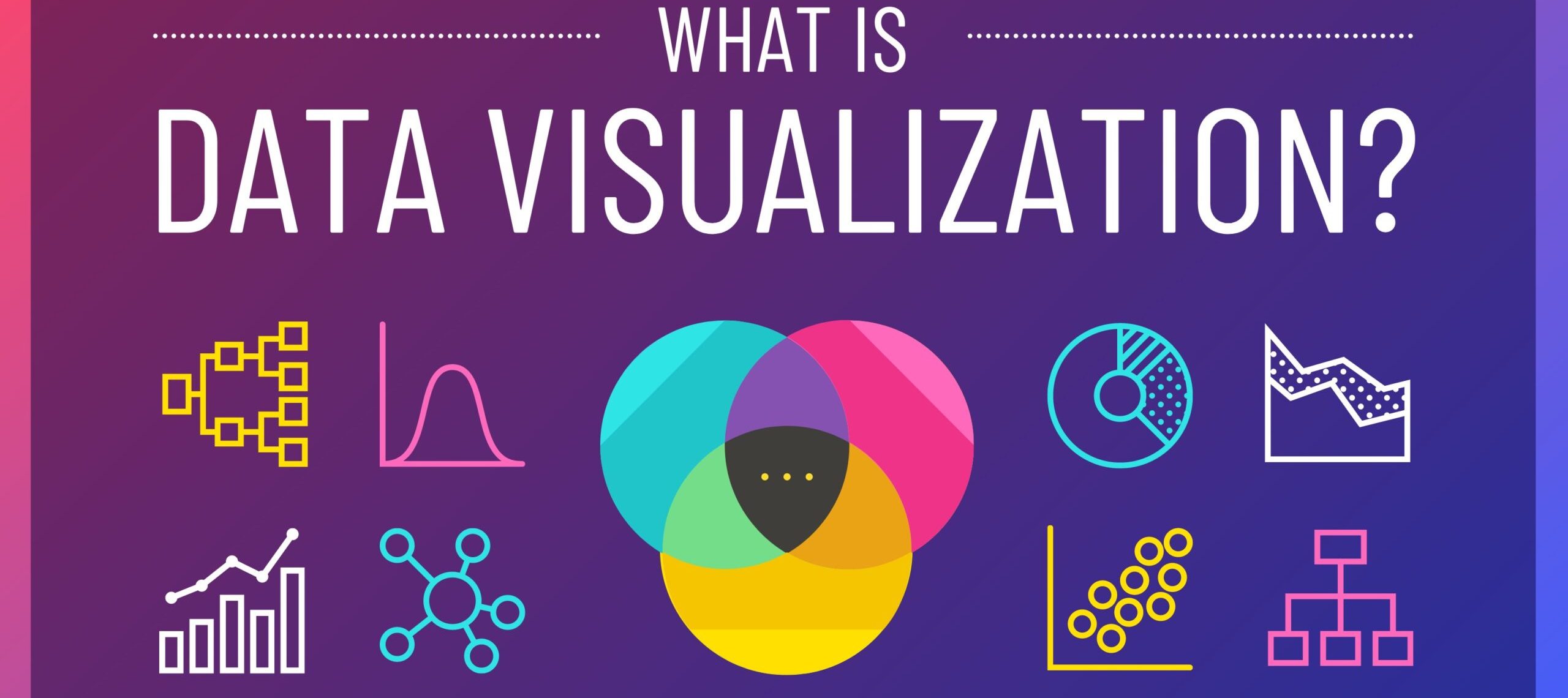
Data visualization is pivotal in portraying data through graphical or visual mediums. This approach uncovers patterns, trends, and insights that raw data alone may not unveil. Incorporating graphical elements such as charts, graphs, maps, and tables, data visualization simplifies data comprehension.
By crafting both enlightening and visually captivating visualizations, data scientists can adeptly convey their discoveries to stakeholders, facilitating well-informed decision-making.
Various tools serve data visualization in data science, encompassing Tableau and Python libraries like Matplotlib, Seaborn, and Plotly. These tools empower users to craft an extensive array of interactive visualizations, charts, and graphs, thereby facilitating data exploration and analysis.
Depending on the project’s distinct requirements, data scientists can select and deploy one or a combination of these tools to generate impactful and informative data visualizations.
Model deployment is the final stage in the data science workflow, in which a data scientist takes the model that they have built and puts it into use within a real-world system.
Model deployment in data science refers to the process of taking a trained machine learning model and making it available for use in real-world applications. To put it simply, once a data scientist has developed a model that can accurately predict certain outcomes based on input data, the model needs to be “deployed” so that it can actually be used to make those predictions.
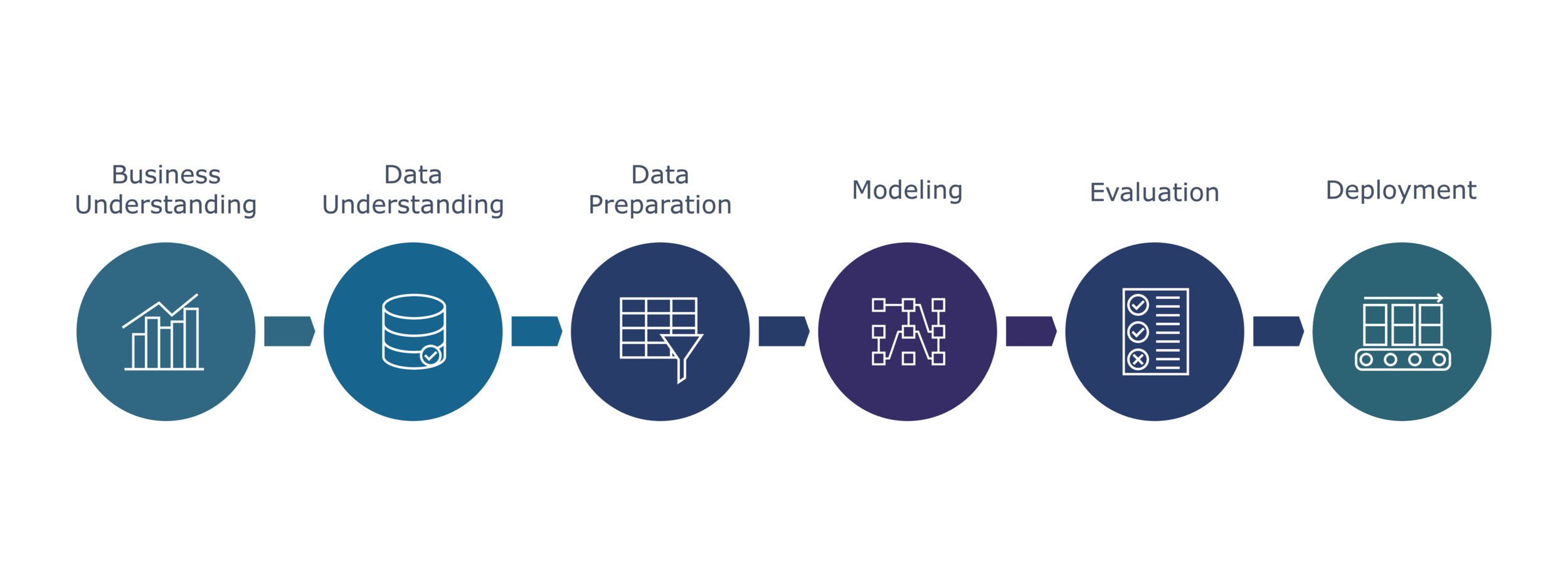
Let me try to explain this through an example for better understanding
Let’s say a retail company wants to develop a machine learning model to predict which customers are most likely to make a purchase on their website.
They collect historical data on customer behaviour, such as their browsing history, past purchases, and other relevant information.
They use this data to train a machine learning model, which is able to predict the probability of a customer making a purchase based on their behaviour.
Once the model has been developed and rigorously tested, the next crucial step is its deployment. This entails ensuring that the company can effectively harness it to generate predictions on fresh data. This process might encompass seamlessly incorporating the model into the backend system of their website. In doing so, the system can autonomously furnish customers with personalized recommendations and enticing offers, all grounded in their anticipated purchase probabilities. Moreover, the model can play a pivotal role in categorizing customers into distinct segments based on their projected behaviors, thereby furnishing the company with valuable insights to fine-tune their marketing campaigns.
In the case outlined above, model deployment goes beyond a mere formality. It involves seamlessly weaving the trained machine learning model into the fabric of the company’s existing systems. The model then transforms into an indispensable tool, generating predictions and bestowing actionable insights, contributing to the continuous improvement of the business.
You know how in movies or TV shows, there’s always that one character who’s really good at explaining complicated stuff in a way that everyone can understand? That’s basically what storytelling in data science is all about!
You’re a data scientist, and you’ve spent weeks collecting and analyzing data on how people are using a new app that your company just launched. You’ve got all these cool graphs and charts that show usage patterns, user demographics, and other interesting insights. But your boss, who’s not exactly a data whiz, is looking at you like you just spoke a foreign language.
That’s precisely where storytelling comes into play. Rather than merely presenting your boss with an array of numbers and graphs, your task is to elucidate their significance in an engaging and comprehensible manner. Perhaps you employ a playful analogy, likening user behavior to the precarious balance of a Jenga tower—remember, the one where you extract blocks while striving to prevent its collapse.
The essence lies in data science storytelling, which entails transforming arid, technical information into something relatable and actionable. The art involves imparting the narrative embedded in the data, guiding your boss, colleagues, or clients to grasp the true essence of the numbers. And if you manage to achieve this in an enjoyable and captivating fashion, you’ve hit the mark!
In summary, we’ve explored the various tools and techniques that make up the exciting field of data science. We’ve covered programming, statistics, maths and probability, DBMS, visualization, model deployment, and storytelling.
Each of these components plays a crucial role in the data science process, and mastering them will be key to becoming a successful data scientist.
But don’t worry if it all seems a bit overwhelming at first! With dedication and practice, anyone can become proficient in these areas and make their mark in the world of data science. And if you’re interested in learning more, be sure to check out the master course that we’ve designed here at 1stepGrow. It’s the perfect way to get started on your own data science journey and become job-ready in no time.
So, thank you for taking the time to read this blog. That’s a wrap!
We provide online certification in Data Science and AI, Digital Marketing, Data Analytics with a job guarantee program. For more information, contact us today!
Courses
1stepGrow
Terms
Anaconda | Jupyter Notebook | Git & GitHub (Version Control Systems) | Python Programming Language | R Programming Langauage | Linear Algebra & Statistics | ANOVA | Hypothesis Testing | Machine Learning | Data Cleaning | Data Wrangling | Feature Engineering | Exploratory Data Analytics (EDA) | ML Algorithms | Linear Regression | Logistic Regression | Decision Tree | Random Forest | Bagging & Boosting | PCA | SVM | Time Series Analysis | Natural Language Processing (NLP) | NLTK | Deep Learning | Neural Networks | Computer Vision | Reinforcement Learning | ANN | CNN | RNN | LSTM | Facebook Prophet | SQL | MongoDB | Advance Excel for Data Science | BI Tools | Tableau | Power BI | Big Data | Hadoop | Apache Spark | Azure Datalake | Cloud Deployment | AWS | GCP | AGILE & SCRUM | Data Science Capstone Projects | ML Capstone Projects | AI Capstone Projects | Domain Training | Business Analytics
WordPress | Elementor | On-Page SEO | Off-Page SEO | Technical SEO | Content SEO | SEM | PPC | Social Media Marketing | Email Marketing | Inbound Marketing | Web Analytics | Facebook Marketing | Mobile App Marketing | Content Marketing | YouTube Marketing | Google My Business (GMB) | CRM | Affiliate Marketing | Influencer Marketing | WordPress Website Development | AI in Digital Marketing | Portfolio Creation for Digital Marketing profile | Digital Marketing Capstone Projects
Jupyter Notebook | Git & GitHub | Python | Linear Algebra & Statistics | ANOVA | Hypothesis Testing | Machine Learning | Data Cleaning | Data Wrangling | Feature Engineering | Exploratory Data Analytics (EDA) | ML Algorithms | Linear Regression | Logistic Regression | Decision Tree | Random Forest | Bagging & Boosting | PCA | SVM | Time Series Analysis | Natural Language Processing (NLP) | NLTK | SQL | MongoDB | Advance Excel for Data Science | Alteryx | BI Tools | Tableau | Power BI | Big Data | Hadoop | Apache Spark | Azure Datalake | Cloud Deployment | AWS | GCP | AGILE & SCRUM | Data Analytics Capstone Projects
Bangalore:
Anjanapura | Arekere | Basavanagudi | Basaveshwara Nagar | Begur | Bellandur | Bommanahalli | Bommasandra | BTM Layout | CV Raman Nagar | Electronic City | Girinagar | Gottigere | Hebbal | Hoodi | HSR Layout | Hulimavu | Indira Nagar | Jalahalli | Jayanagar | J. P. Nagar | Kamakshipalya | Kalyan Nagar | Kammanahalli | Kengeri | Koramangala | Kothnur | Krishnarajapuram | Kumaraswamy Layout | Lingarajapuram | Mahadevapura | Mahalakshmi Layout | Malleshwaram | Marathahalli | Mathikere | Nagarbhavi | Nandini Layout | Nayandahalli | Padmanabhanagar | Peenya | Pete Area | Rajaji Nagar | Rajarajeshwari Nagar | Ramamurthy Nagar | R. T. Nagar | Sadashivanagar | Seshadripuram | Shivajinagar | Ulsoor | Uttarahalli | Varthur | Vasanth Nagar | Vidyaranyapura | Vijayanagar | White Field | Yelahanka | Yeshwanthpur
Other Top Cities:
Mumbai | Pune | Nagpur | Delhi | Gurugram | Chennai | Hyderabad | Coimbatore | Bhubaneswar | Kolkata | Indore | Jaipur and More